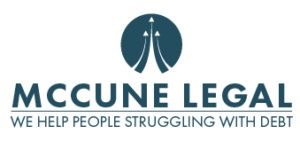A chapter 13 bankruptcy commences just like a chapter 7 bankruptcy — by filing forms with the appropriate bankruptcy court. The main form is a called voluntary petition but there are a LOT of other forms that need to be completed to ensure your case is properly filed.
Where the debtor chooses to file a case depends on what is considered to be the proper venue. For most consumer cases, the venue is going to be where the debtor has lived for the 91 days prior to the filing date.
Chapter 13 Bankruptcy Means Having A “Plan”
The forms for chapter 13 bankruptcy are very similar to the chapter 7 bankruptcy forms. The main difference is that in Chapter 13 the debtor must also file a plan. The goal of Chapter 13 is to get this plan confirmed by the court, which really just means it must be approved by the bankruptcy judge.
During the process, there may be objections from creditors and/or the chapter 13 trustee. These will need to be resolved before the plan can be confirmed. The Bankruptcy Code has very specific requirements that the plan must meet. These requirements mandate the plan to treat certain creditors in a certain way.
The confirmation process typically takes 3 to 5 months after the case is filed. It is typical to have to revisit the plan several times before receiving final confirmation. There can be a lot to fight about during this part of chapter 13 bankruptcy and that’s why you need to have an experienced and committed bankruptcy attorney on your side. Contested matters can include:
- Valuation of specific assets
- Disposable income
- Treatment of certain claims in the plan
There are many other issues that can arise. It’s not possible to list all of them here as each case is unique. Just another reason to hire a well-versed bankruptcy attorney.
Behind The Scenes Of A Chapter 13 Bankruptcy Claim
There’s a lot of moving parts in a Chapter 13 case. The debtor needs to provide the trustees with a lot of documentation prior to the hearing. The debtor also needs to be keeping a close eye on the claims filed in the case as he/she may want to object to certain claims. In certain instances, the debtor may actually want to file a claim on behalf of a creditor. For non-governmental units, the deadline to file a claim is 70 days after the case is filed.
Just like in chapter 7, a chapter 13 filing puts into effect the Automatic Stay, which protects the debtor from most creditor actions. The chapter 13 plan will require that the debtor make monthly payments to the chapter 13 trustee. The first payment is due 30 days after the case is filed and the trustee is placed in charge of distributing those funds to all relevant creditors, depending on how the plan treats them. None of this happens until the plan is confirmed!
Confirmation And The Key To Freedom

Getting the plan confirmed with the best terms possible for the debtor is the job of the debtor’s attorney. That’s where McCune Legal comes into the picture. It is our job to ensure you don’t pay more than is necessary and to alleviate any excess stress. Once the plan is officially approved, the debtor and creditors are bound by the agreed upon terms. And if you honor these terms, freedom is within reach. You will be given a discharge when the plan (with a payment period that can last from 3 to 5 years) is completed.
Chapter 13 bankruptcy is a great option for those struggling to overcome their debt. If you want to have a conversation about whether or not it’s the right choice for you, McCune Legal offers a FREE 30-minute consultation.

